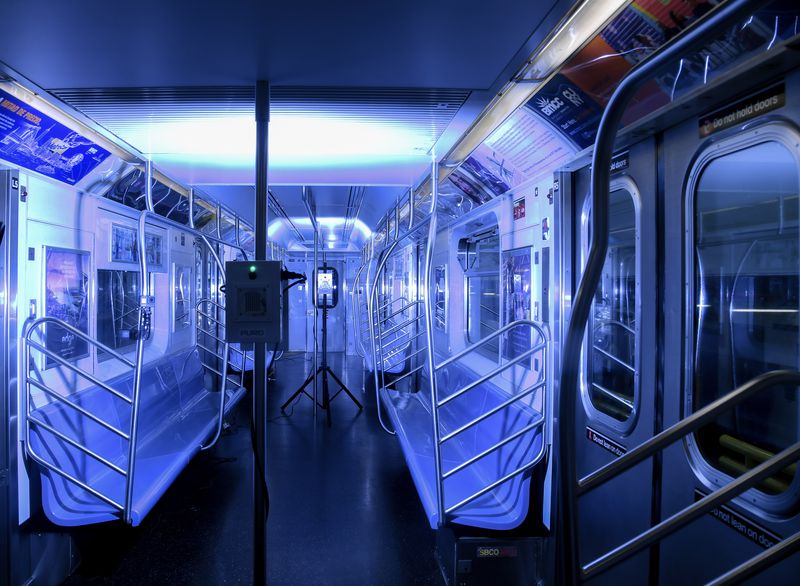A form of ultraviolet (UV) light holds promise as an innovative way to neutralize airborne SARS-CoV-2 particles and other viruses, potentially helping slow the COVID-19 pandemic that, to date, has caused over 1.3 million deaths globally. More energetic than visible light, UV light is generally divided into three frequency bands: UVA, UVB, and UVC. The first two bands are commonly known for causing sunburns and cataracts as well as increasing the risk of skin cancer. The most energetic and thus potentially most dangerous of the three, UVC, is not naturally encountered at Earth's surface because it is absorbed by the ozone and oxygen in our planet's atmosphere. However, recent research has shown that a particular kind of UVC, known as far-UVC, does not harm humans while effectively destroying airborne virus particles. These results suggest that radiating human-occupied rooms with far-UVC could slash airborne virus counts and thus curb novel coronavirus infection rates. See also: Atmosphere; Coronavirus; Electromagnetic radiation; Stratospheric ozone; Ultraviolet radiation; Ultraviolet radiation (biology); Virus

UVC light has long been recognized for its germicidal properties. This energetic light causes damage to DNA, RNA, and other biomolecules by breaking the chemical bonds necessary for the molecules to maintain their structure and function. Typically, UVC light with a wavelength of approximately 254 nanometers, generated by mercury-vapor or xenon lamps, has been utilized to sterilize unoccupied spaces, such as empty subway cars and hospital rooms, as well as disinfect air in duct systems. Far-UVC light has a shorter wavelength, between 207 and 222 nanometers, meaning it conveys more energy per unit time and exposure than longer UVC wavelengths. These shorter frequencies, however, do not penetrate as deeply into biological tissue as longer UVC frequencies, being readily absorbed by proteins and other biomolecules. As a result, far-UVC light penetrates no farther than a few micrometers and is effectively blocked by the outer, non-living layer of human skin as well as by the tear layer covering the human eye. Yet because viruses are so small—and in the particular case of SARS-CoV-2, a mere micrometer in diameter—UVC light can penetrate the virus's outer envelope and ultimately inactivate the virus. See also: Chemical bonding; Deoxyribonucleic acid (DNA); Light; Protein; Ribonucleic acid (RNA); Skin; Wavelength
Studies have shown that 222-nanometer far-UVC light can inactivate 99.9% of the surrogate airborne coronaviruses (similar to SARS-CoV-2) encountered after a 25-minute continuous exposure. This level does not exceed existing regulatory limits for human UVC light exposure. Based on these and other preliminary results, researchers are continuing to investigate far-UVC's effectiveness against SARS-CoV-2 itself. In parallel, scientists are also exploring optimal methods for producing the desired far-UVC wavelength—for instance, with low-cost excimer lamps—and how best to deploy these lamps in hospitals, long-term care facilities, offices, schools, and other public settings where virus spread can run rampant. Alongside vaccines and therapeutics, personal protective equipment such as masks, and behavioral strategies such as social distancing, far-UVC light could prove to be another effective means of thwarting the novel coronavirus as well as future pandemics. See also: Novel coronavirus is declared a global pandemic





